Current Field Projects
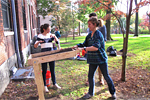 Archaeology of College Hill, Providence, RI
Archaeology of College Hill, Providence, RI
Andrew Scherer and Elizabeth Davis, co-directors
Archaeology of College Hill, an ongoing fall term course and fieldschool for Brown undergraduates, has worked at multiple sites in the area immediately surrounding the Brown main campus. Begun in the fall of 2006 at the First Baptist Church in America, the field school moved in fall 2008 to the John Brown House Museum, to the "Quiet Green" of Brown University in 2012, and to the grounds of Moses Brown School in 2015, where work concluded in 2022. The project now continues in the area surrounding Brown University's List Art Building, at 58 College Street.
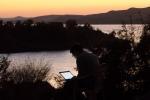 Kiosk Archaeological Field Recording and Management
Kiosk Archaeological Field Recording and Management
Laurel Bestock and Lutz Klein, co-directors
Kiosk is a tablet-based recording software and data management package being developed at Brown University for documenting archaeological work, both excavation and survey. Open-source, highly customizable, running without access to the internet, and still growing, Kiosk is currently utilized by projects from Peru to Cyprus to the Archaeology of College Hill. The software is available for use for any Brown-affiliated project, including those run by graduate students, and there are also opportunities for interested students to be engaged in development, testing, and documentation of the software.
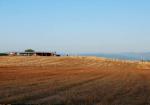 Koutroulou Magoula Archaeology and Archaeological Ethnography Project, Greece
Koutroulou Magoula Archaeology and Archaeological Ethnography Project, Greece
Yannis Hamilakis and Nina Kyparissi-Apostolika, co-directors
Koutroulou Magoula is a multi-period archaeological site in central Greece with the main period of occupation around 6000 BCE (Middle Neolithic period). There are also burials dating to the Bronze Age (1500 BCE), and the Medieval period (c. 1200 CE). It is a finds-rich site, with buildings surviving to more than 1 m. in height, pottery, lithics, animal bones, and an impressive corpus of more than 350 clay figurines.
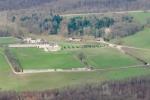 MonArch: Wesleyan-Brown Monastic Archaeology Project, France
MonArch: Wesleyan-Brown Monastic Archaeology Project, France
Sheila Bonde and Clark Maines, co-directors
MonArch brings together a multi-disciplinary team to focus on the larger role of monasteries in medieval and early modern France. Work has been conducted, since 1982, at three sites: Saint-Jean-des-Vignes, Bourgfontaine and Notre Dame d’Ourscamp. Excavations continue at the medieval charterhouse of Bourgfontaine in northern France, focusing on the 14th c. Great Cloister and the excavation of a monastic cell.
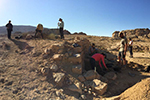 Petra Terraces Archaeological Project, Jordan
Petra Terraces Archaeological Project, Jordan
Felipe Rojas and Sarah E. Newman, co-directors
The Brown University Petra Terraces Archaeological Project (BUPTAP) is working to refine scholarly understanding of the history and dynamics of Petra’s agricultural landscapes, concentrating on the agricultural hinterlands immediately north of Petra and, more specifically, on the Wadi Baqa’ east of the road between Umm Seyhoun and Bayda and west of the rock of Shammasa.
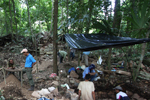 Proyecto Arqueológico Busiljá-Chocoljá, Guatemala and Mexico
Proyecto Arqueológico Busiljá-Chocoljá, Guatemala and Mexico
Andrew Scherer and Charles Golden, co-directors
The Proyecto Arqueológico Busiljá-Chocoljá is exploring the ancient cultural and natural landscapes of the of the Classic Maya kingdoms (AD 250-900) of Piedras Negras, Yaxchilan, and Sak Tz'i'. Current fieldwork aims to deepen our knowledge of Maya political history through the comparative study of competing polities in the western Maya lowlands, focusing especially on warfare, economy, and environmental history.
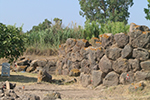 The S'Urachi Project: Cultural Encounters and Everyday Life around a Nuraghe, Italy
The S'Urachi Project: Cultural Encounters and Everyday Life around a Nuraghe, Italy
Peter van Dommelen and Alfonso Stiglitz, co-directors
First built in the Bronze Age, nuraghi, the famous stone towers of Sardinia, are usually regarded as prehistoric monuments. They continued to be inhabited throughout later millennia as well, however, and it is these later phases of the Archaic to Roman periods that are under investigation at the monumental site of S'Urachi on the central west coast of Sardinia (Italy).
 Upper Sabina Tiberina Project, Italy
Upper Sabina Tiberina Project, Italy
Candace M. Rice, Tyler V. Franconi, Dylan Bloy, and Gary D. Farney, co-directors
The Upper Sabina Tiberina Project, in operation since 2011, seeks to understand the long-term development of rural settlement and economy in the Sabine region of Italy. The project focuses largely on the excavation of a mid-Republican to mid-imperial multi-phase villa located in the town of Vacone. The villa has an elaborately decorated residential area and large agricultural production area with one of the largest olive oil production facilities known to date from central Italy. There is evidence for sporadic occupation of the site following the abandonment and collapse of the villa, along with numerous burials dating to the Lombard period.
 Uronarti Regional Archaeology Project, Sudan
Uronarti Regional Archaeology Project, Sudan
Laurel Bestock and Christian Knoblauch, co-directors
Uronarti, an island in the Nile in Lower Nubia (modern Sudan), was the site of a major fortress constructed by the kings of the Egyptian Twelfth Dynasty. URAP is working both to document the fortress and to better comprehend its setting in a complex physical and cultural landscape in order to illuminate the relationships between Egypt and Nubia at this critical period.
